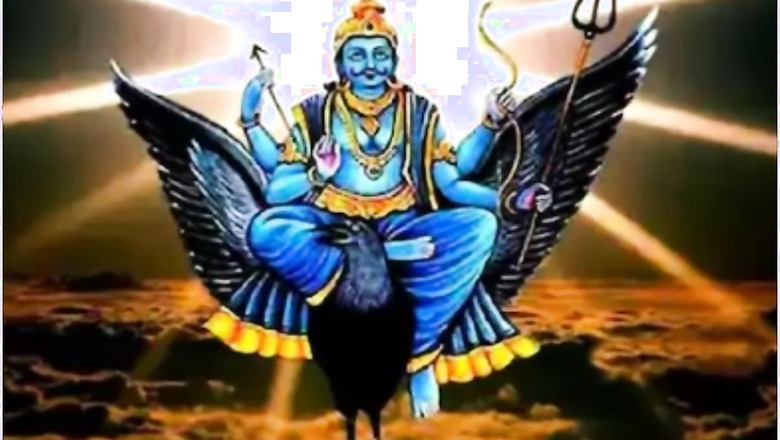
views
Hindu calendar month has on 30 tithis divided into two pakshas — Krishna Paksha and Shukla Paksha. Each paksha starts with Purnima means full moon day and Amavasya means no moon day.
Amavasya falling on Saturday is called Shani Amavasya, which is dedicated to Lord Shani. This year, Shani Amavasya falls on Saturday, March 13 in Phalguna Maas.
The day is believed to be auspicious to perform havan and to observe fast or upvaas to propitiate Lord Shani. Devotees also visit Shani temples to seek good luck and fortune.
It is considered a holy day to get rid of doshas. The pictorial depiction of lord Shani is dark complexion god dressed up in black clothes holding a sword, arrows, two daggers and mounted on a black vulture.
As per the Hindu scriptures, Lord Shani is the son of Lord Surya and rules the planet Saturn and weekday Saturday. He is also known as- Sanaischara and hence, Shani Amavasya is also called Shanishchara Jayanti.
The day is a divine day to worship Lord Shani as he is believed to appear on Earth to give blessing to his devotees on this day. People perform puja and offer prayers to get rid of Pitru Dosha. Hindus take bath in sacred rivers before sunrise on this day and perform religious rituals there.
Shani Puja is performed by offering dhoop, deep and naivedyam to the ancestors. After the puja, meals are offered to the brahmins and poors.
Many people also observe a vrat orfast for the whole day and seek moksha for their ancestors. It is believed that donating black clothes, black til or sesame, sesame oil on this day brings favourable outcomes and good fortunes. Shani Tailabhishekam and Shani Shanti Puja are also performed on Shani Jayanti to lessen the effect of Shani Dosha, which is also called Sade Sati.
Meanwhile, all Amavasyas are considered auspicious to perform Shraddh rituals to appease ancestors as well as to perform Kalasarpa Dosha puja.
Read all the Latest News, Breaking News and Coronavirus News here














Comments
0 comment